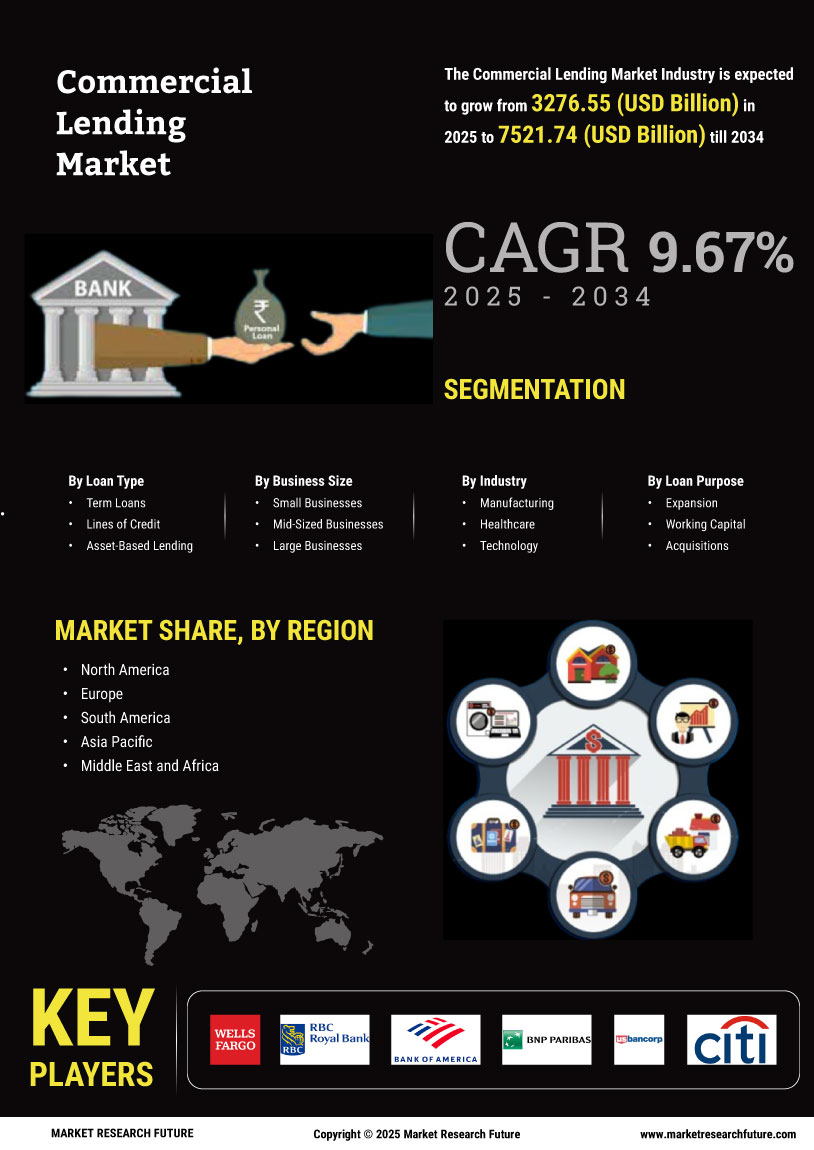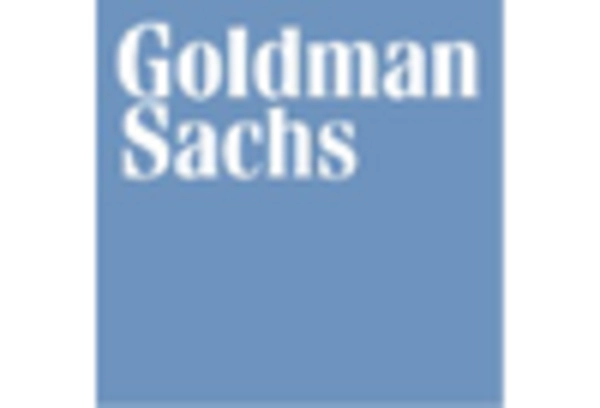Economic Growth
Economic growth plays a pivotal role in shaping the Commercial Lending Market. As economies expand, businesses often seek financing to capitalize on new opportunities, leading to increased demand for commercial loans. Recent data indicates that small and medium-sized enterprises (SMEs) are particularly reliant on external financing, with approximately 70% of their funding sourced from loans. This trend suggests a robust appetite for credit, driven by optimism in business prospects. Additionally, sectors such as real estate and manufacturing are experiencing a resurgence, further fueling the need for capital. However, the relationship between economic growth and lending is complex; while growth can stimulate demand, it may also lead to inflationary pressures, prompting central banks to adjust interest rates. Thus, the interplay between economic conditions and lending dynamics remains a critical factor in the Commercial Lending Market.
Market Competition
Intensifying competition within the Commercial Lending Market is reshaping the landscape for lenders and borrowers alike. With the emergence of alternative financing options, such as peer-to-peer lending and crowdfunding, traditional banks are facing pressure to innovate their offerings. This competitive environment has led to more favorable terms for borrowers, including lower interest rates and flexible repayment options. Recent statistics indicate that non-bank lenders have captured a growing share of the market, accounting for nearly 30% of total commercial loans. This shift suggests that borrowers are increasingly seeking diverse financing solutions tailored to their specific needs. Consequently, traditional lenders may need to enhance their value propositions to retain clients, potentially leading to a more dynamic and customer-centric Commercial Lending Market. The ongoing evolution of competition is likely to drive further innovation and efficiency in lending practices.
Regulatory Changes
The Commercial Lending Market is currently influenced by evolving regulatory frameworks that aim to enhance transparency and reduce risk. Recent regulations have mandated stricter lending standards, which may lead to a more cautious approach among lenders. This shift could potentially reshape the competitive landscape, as institutions adapt to comply with new requirements. For instance, the implementation of Basel III standards has necessitated higher capital reserves, impacting lending capacities. As a result, lenders may focus on more creditworthy borrowers, thereby altering the risk profile of the market. Furthermore, ongoing discussions regarding consumer protection laws may lead to additional compliance costs, influencing operational strategies within the Commercial Lending Market. Overall, these regulatory changes appear to be a double-edged sword, fostering stability while potentially constraining growth opportunities.
Sustainability Initiatives
Sustainability initiatives are gaining traction within the Commercial Lending Market, as both lenders and borrowers recognize the importance of environmentally responsible practices. Financial institutions are increasingly incorporating sustainability criteria into their lending decisions, offering favorable terms for projects that align with green objectives. Recent surveys indicate that over 60% of lenders are prioritizing sustainable investments, reflecting a broader commitment to corporate social responsibility. This trend is particularly evident in sectors such as renewable energy and sustainable agriculture, where financing is directed towards projects that contribute to environmental goals. Furthermore, regulatory bodies are encouraging sustainable lending practices, which may lead to the development of new financial products designed to support eco-friendly initiatives. As sustainability becomes a core consideration in lending strategies, the Commercial Lending Market is likely to witness a shift towards more responsible financing solutions.
Technological Advancements
Technological advancements are revolutionizing the Commercial Lending Market, enabling lenders to streamline operations and enhance customer experiences. The integration of artificial intelligence and machine learning in credit assessment processes has significantly reduced the time required for loan approvals. For instance, automated underwriting systems can analyze vast amounts of data in real-time, allowing lenders to make informed decisions swiftly. Moreover, the rise of fintech companies has introduced innovative lending platforms that cater to niche markets, expanding access to credit for underserved businesses. This technological shift not only improves efficiency but also fosters competition, compelling traditional banks to adapt or risk losing market share. As technology continues to evolve, its impact on the Commercial Lending Market is likely to deepen, creating new opportunities and challenges for lenders.


















Leave a Comment